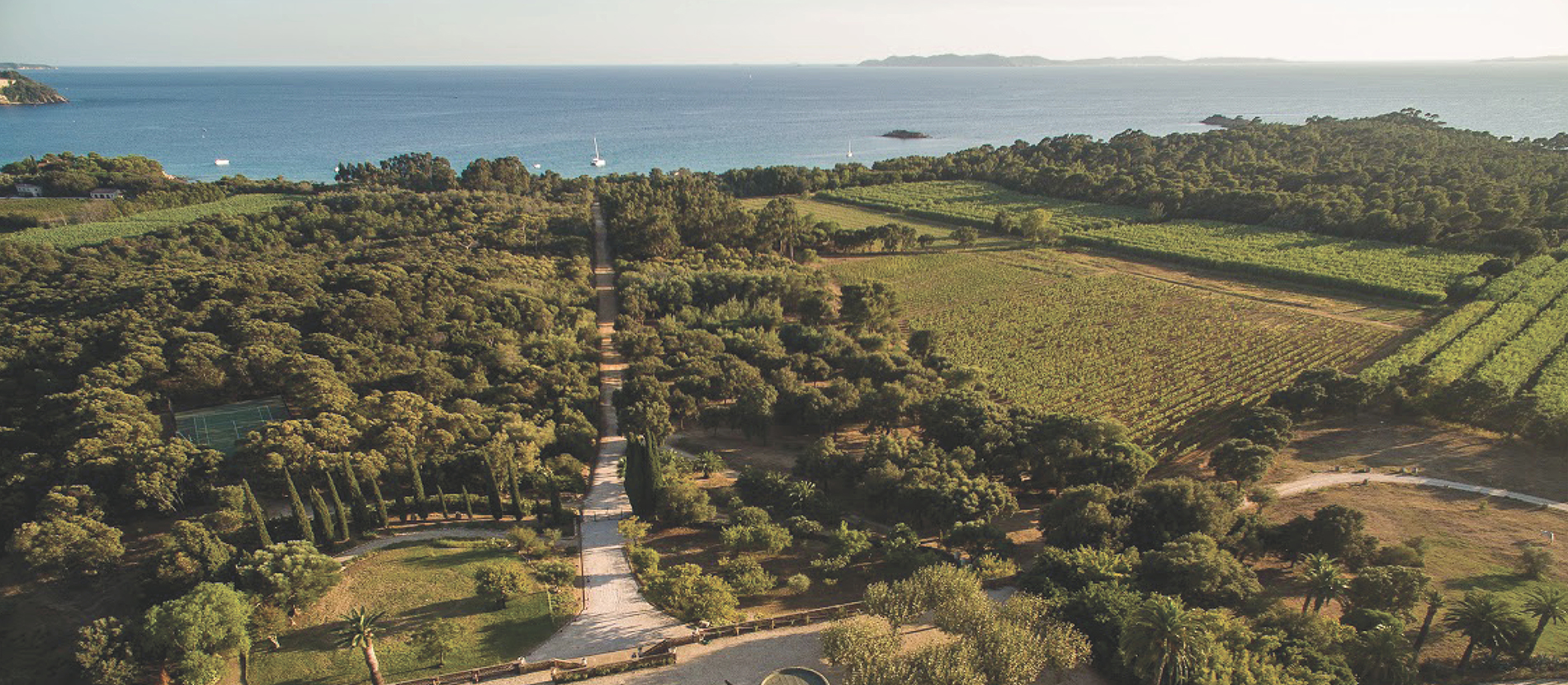One of the oldest Château in the Var at Bormes les Mimosas
The Château de Brégançon is situated in the heart of the Côtes de Provence production area, within a protected area. Constructed at the beginning of the 18th century, it occupies the grounds of a former Marquisate, with the fort—now serving as a presidential residence—once being the fiefdom.
A familial stronghold that has been inherited and passed down through successive generations since 1816.
In 1816, Simon SABRAN, the grandfather of the current TEZENAS family, purchased the estate. Back then, it encompassed 1030 hectares, featuring 75 hectares of vines, 2000 olive trees, 2000 mulberry trees, 600 fig trees, and various fruit trees. The dwelling was modest, characterized by a fortified house style adjacent to a farmyard. A portion of the production served to sustain the Fort de Brégançon and its soldiers. Several years following Simon's passing in 1835, his wife and eight children opted to sell the property.
In 1837, the property was acquired by Adolphe Auguste CHAPPON, a prosperous shipowner from Marseille who wed Georgine BARRONET. Notably appreciative of northern Italian architecture, Georgine chose to dismantle the existing house down to its foundations and construct a castle featuring three towers and a chapel. She adorned the walls of the ground floor with frescoes and embellished the floor with mosaics.
Fortuitously, Hermann SABRAN, the grandson of Simon and a lawyer at the Lyon court, attended to Mr. CHAPPON's interests in Marseille. Through numerous visits to the city, he had the chance to meet Hélène CHAPPON, the daughter of the shipowner. They tied the knot in 1869 in Bormes-les-Mimosas. In 1880, Hermann and Hélène inherited Brégançon, marking the return of the estate to the SABRAN family.
In 1874, Hermann and Hélène welcomed a daughter named Renée, who tragically passed away at the age of 8 due to bone tuberculosis. Concurrently, in that very year, Hermann assumed the role of president of the board of directors of the Hospices Civiles de Lyon. In honor of his late daughter, he aspired to establish a hospital center to provide care for less fortunate children admitted to the Charité hospital in Lyon.
Why shouldn't Brégançon be the site for this admirable project?
Despite the absence of a readily available freshwater source, he commissioned the construction of a dam, serving the dual purpose of providing water and benefiting local farmers—a structure that endures to this day. Nevertheless, the challenging access routes for transporting sick children from Lyon dissuaded him from persisting with the hospital project in Brégançon. Undeterred, he acquired a property nearby on the Giens peninsula, where the hospital was eventually erected. Since its inception, the hospital has borne the name of Renée SABRAN in commemoration of his daughter.
For practical considerations, in 1889 Hermann purchased an 18-meter English yacht in Messina, christened "l'Iris" or "le tramway de Giens" in homage to the frequent journeys between Brégançon and Giens. Presently, the hospital is acclaimed for its excellence in post-traumatic rehabilitation, cystic fibrosis, and bone surgery. It continues to operate under the auspices of the Hospices Civiles de Lyon.
Without any descendants, Hermann SABRAN passed away in 1914. In his will, he left his estate to his nephew, Francis SABRAN, who married Marguerite GERARD, the daughter of the owners of Château Léoube. Francis later passed on Brégançon to his sole daughter, Marguerite SABRAN, upon her marriage to Georges TEZENAS.
From June 1940 to December 1942, the castle was occupied first by the Italians and then by the Germans from 1942 to August 1945. During this period, the castle underwent significant transformations, becoming a fortress with trenches, boomers, and cannons lining the terrace. It was entirely painted in camouflage colors. The TEZENAS family sought refuge in Château Léoube during the German occupation. When the Germans vacated Brégançon, the castle bore the scars of the occupation, with some areas left in ruins. Notably, the chapel, which had housed ammunition, was completely destroyed, causing severe damage to the castle. Georges TEZENAS took on the task of renovating and reconstructing the chapel. It wasn't until the mid-1950s that the transition from mixed farming to vineyards occurred.
Since then, two generations have followed one another with a determined focus on enhancing the quality of the crops and the wine. In 1955, Georges TEZENAS received the "Cru Classé" classification in recognition of his dedication to research and commitment to quality.
Today, Olivier TEZENAS, the eighth generation since Simon SABRAN, channels his passion for the vine, love of the terroir, and expertise into crafting authentic wines that seamlessly blend elegance and refinement. His commitment to developing this extraordinary site is underscored by the construction of a new cellar in 2012.
Cru Classé since 1955
The legacy of the Côtes de Provence Classified Growths traces back to 1895 when certain "Winegrowers of the Var" recognized the significance of uniting to champion and promote their wines and properties.
In 1947, driven by these resolute individuals, a commission of experts, under the supervision of the INAO, meticulously selected 23 estates based on a rigorous examination of their terroir, expertise, and reputation.
Following the example of Bordeaux's most prestigious wine regions, these estates and châteaux of Provence were bestowed with the distinguished title of "Cru Classé" (Ministerial order of 20 July 1955).
In 1990, the Club des Crus Classés was established with the goal of enhancing wine quality while preserving tradition and expertise.
Today, the narrative continues as 18 estates and châteaux officially unite, driven by the ambition to assert and communicate their "Cru Classé" identity, acknowledged by their peers. Their collective aspiration is to establish this hierarchy as a recognized symbol of excellence.

